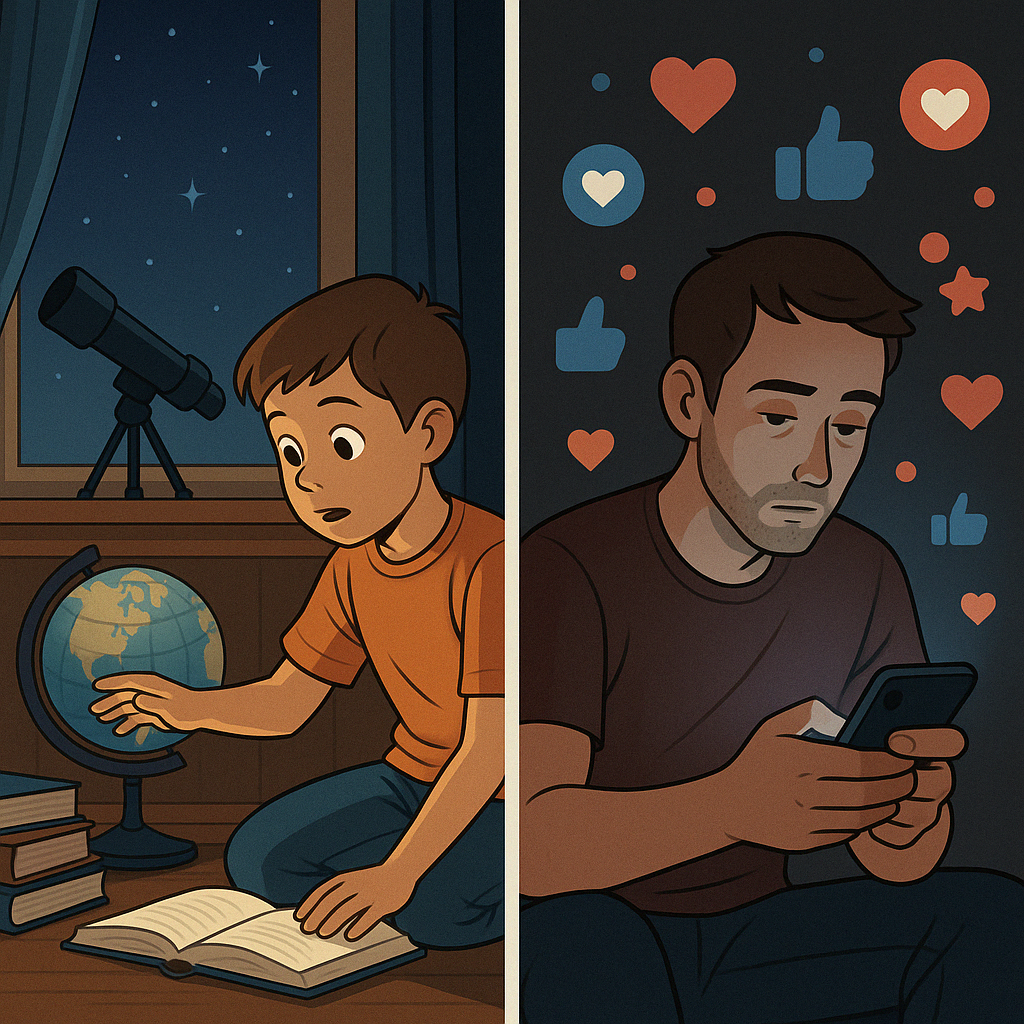The Age of Distraction: How Short-Form Media is Reshaping Minds and Misleading Millions
We are more connected than ever. News reaches us in seconds, conversations span continents, and knowledge is quite literally at our fingertips. Yet paradoxically, we seem to know less, trust less, and question even less. Our attention spans are shrinking, and our understanding of the world is increasingly shaped by clips, quips, and clever edits. Short-form media—TikTok videos, Instagram Reels, YouTube Shorts, memes, and disappearing Snapchats—has become our default mode of consumption. But what happens when depth is replaced with dopamine?
Short Media: The Good, the Addictive, and the Misused
Let’s be clear: short-form content has value. It can entertain, educate, and even mobilize. Creators have found inventive ways to compress complex topics into digestible pieces. But the very design of these platforms rewards brevity over accuracy, reaction over reflection. Nuance is a casualty. Punchlines are delivered without set-up. Opinions are shared without evidence. And most dangerously, misinformation is packaged to feel true.
The Rise of Meme News and Cult Narratives
Memes once poked fun at culture; now they shape it. Political ideologies, health myths, and conspiracy theories are now being spread with a photo, a slogan, and just enough wit to go viral. When ideas are stripped of context, they’re easier to consume—and easier to believe. The result isn’t just confusion. It’s the normalization of half-truths and the glorification of ignorance wrapped in entertainment.
A Cultural Shift: From Curiosity to Clicks
This isn’t just a technology issue—it’s a cultural one. When the systems we use reward simplicity, it becomes harder to cultivate curiosity. We’re raising generations on content without context, arguments without evidence, and opinions without accountability. It’s not that people are getting "dumber"—it's that our systems are incentivizing intellectual laziness.
What It Means When Something Goes ‘Viral’
We often celebrate content that goes viral—but it’s worth pausing to consider the origins of the term. “Viral” is derived from virus, something that spreads quickly, often invisibly, and can cause real harm. In the digital space, a meme, a clip, or a phrase can infect millions of minds in minutes—regardless of whether it’s true. When misinformation spreads virally, it bypasses the immune system of critical thinking. It replicates in echo chambers, mutates to fit different narratives, and creates real-world consequences, from vaccine hesitancy to political radicalization. Just like with a biological virus, the most effective countermeasure isn’t panic—it’s education and early intervention.
False Certainty in an Age of Complexity
We live in a complex world. Climate change, economics, geopolitics, public health—these are topics that demand time, critical thinking, and discomfort. But short-form media isn’t designed for that. It’s designed to feel good, fast. To affirm, not challenge. And when content is curated by algorithms tuned to our preferences, we rarely encounter perspectives that force us to think beyond our bubble.
The Problem of Pattern-Seeking Without Understanding
Humans are wired to seek patterns—it’s how we make sense of the world. But when content is stripped of nuance, it’s easy to confuse correlation with causation. Take a recent example: a child contracts measles just days after receiving the MMR vaccine. One side of the internet uses this to “prove” that vaccines cause disease. The actual story? Vaccines take time to become effective, and the child was likely exposed prior to vaccination—possibly by a traveler currently being traced by health officials.
This is the danger of shortcut storytelling. When platforms prioritize speed and virality over depth and clarity, we get narratives without evidence and conclusions without investigation. A meme doesn’t pause for context—and neither does the average viewer.
So, What Do We Do?
The solution isn’t to abandon short-form media. It’s to use it wisely—and be aware of its limits. Ask:
Does this clip tell the whole story, or just the most shareable part?
Am I reacting to how something feels, or how well it’s supported by facts?
Have I taken the time to dig deeper before forming an opinion?
We can—and must—teach digital literacy as a foundational skill. Not just how to use technology, but how to question what it delivers. The future doesn’t belong to those who consume the most content—it belongs to those who know how to think through it.
Coming Soon:
We’ll follow up on this idea in our next piece: “Correlation Isn’t Causation: How Our Need for Simple Stories Fuels Dangerous Narratives” — exploring how our minds are tricked into believing false connections, and why understanding this one concept could protect us all from manipulation.
Richard Joseph is a technology and business strategist focused on supply chains, digital transformation, and the intersection of economic policy and modern enterprise.

